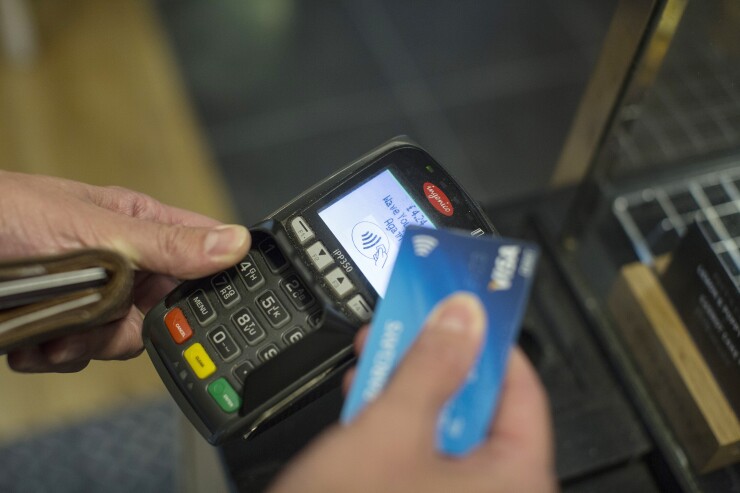Even before the pandemic, retailers were pushing terminal makers to adjust to new trends on the fly. Technology cycles have become even shorter now — if there even are development cycles anymore.
“The evolution is so rapid right now, and it will only want to accelerate,” said Irfan Nasir, head of solutions development and deployment for North America for Ingenico. “Nobody wants to invest in a platform that will be obsolete one or two years down the line.”
Ingenico is leaning on its cloud partnership with Google to support a series of new authentication and payment use cases around the internet of things (IoT) and contactless transactions. The company is facing the same pressures as it was before the pandemic — namely from legacy rivals such as Diebold Nixdorf and NCR, and the growth of new rivals like Stripe and Square.
Both Stripe and Square made moves designed to capture more of their relationships with merchants.
For Ingenico, the varied crises of 2020 stack on top of the fintech competition, and call for a strategy that doesn’t focus on a single migration, such as to contactless payments, but several migrations simultaneously. “Today it’s contactless, tomorrow it’s QR code based, or maybe facial recognition,” Nasir said.

Merchants took an incremental approach to the cloud, using it for a few services, but the current expectation is for a more rapid uptake — particularly for Ingenico’s client base of small to mid-sized merchants. While larger merchants or big box chains can customize new consumer experiences, smaller merchants face tough choices because of budgetary pressures, Nasir said. The cloud provides more options with less overhead.
“If you design in the device, it’s very expensive. There needs to be an enablement for an off- or on-premise cloud, or
Ingenico’s pairing with Google is partly brand design. It wants to avoid Amazon’s cloud, which many of Ingenico’s clients see as competition even though Amazon’s cloud is not necessarily related to its e-commerce business.
One Amazon project that is a threat to both Ingenico and its clients is the e-commerce giant’s Amazon Go checkout-free store. As Amazon expands its checkout-free concept to
Both Amazon and these technology companies could extend autonomous checkout to more stores, bringing easier checkout and a trove of data with it, leaving Ingenico with another competitive threat.
“There’s not room anymore for the small merchants to catch up,” said Bradford Giles, senior vice president of marketing and sales enablement for Ingenico. “It used to take five years for a retail innovation to flow through the market. Now it’s a year or so before everyone has to have it.”
It’s here where the cloud can also be useful, according to Giles. Ingenico is working on cloud-enabled updates to antennas, sensors and beacons to support mobile powered check in, item recognition and checkout via an app—an experience similar to autonomous retail.
“As the new generations come into their own financially, they’ll have a different view of what a payment interaction should be,” Giles said.
In an earlier interview,
Diebold Nixdorf’s PR office emailed information on how it is using the cloud to add speed to digital payment updates and the analysis that goes along with payments. In addition to remote ATM management, Diebold Nixdorf is enabling a cloud-based strategy through its Vynamic software portfolio, which allows merchants to use SaaS for deployments and updates. And Diebold’ Nixdorf is investing in its Vynamic fuel connection to improve connections between fuel pumps and convenience stores.





